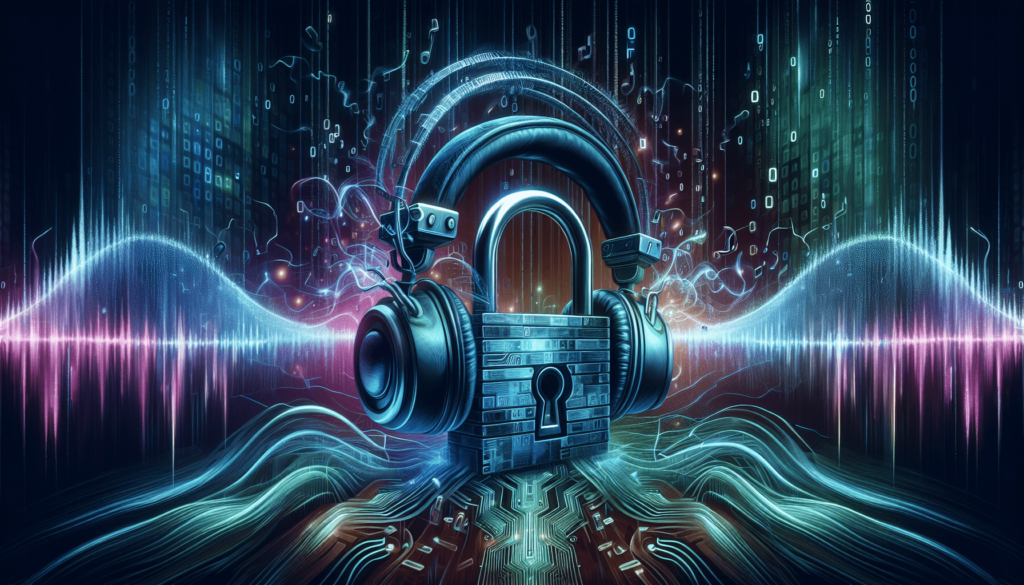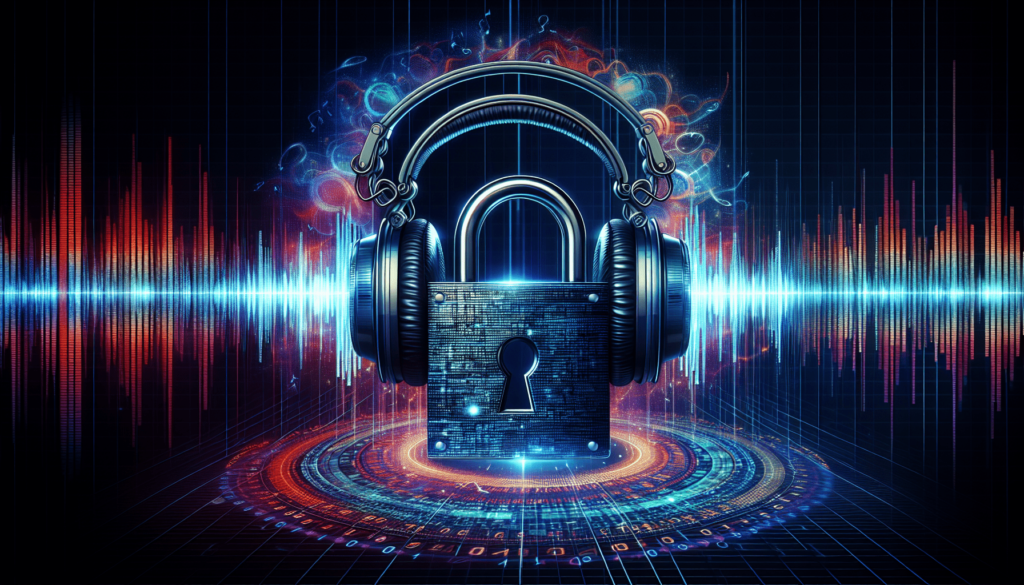In the ever-evolving landscape of digital music, understanding Intellectual Property Rights (IPR) has become more crucial than ever. As an avid music enthusiast, I’ve noticed how the rise of streaming services and digital downloads has revolutionized how we consume music, but it also brought along complex challenges regarding copyright, royalties, and licensing. This article delves into the nitty-gritty of digital music IPR, unraveling the legal labyrinth artists, producers, and listeners navigate to ensure creativity and commerce harmonize seamlessly. From distinguishing between different IPR types to exploring real-world case studies, I aim to shed light on this intricate yet fascinating domain with a touch of humor and practical insights, making it accessible for everyone. Have you ever found yourself humming to the tune of a popular song and wondered, “Who owns the rights to this music?” Well, buckle up because today we’re diving into the intriguing world of Digital Music Intellectual Property Rights. We’re about to explore the labyrinth starting from who owns the notes you can’t stop singing, to the ramifications of streaming your favorite rock anthem. And yes, I’ll try to make it as engaging as a David Sedaris essay, with a pinch of humor and a dash of personal anecdotes.

What are Intellectual Property Rights?
Intellectual property rights (IPR) are like invisible shields that protect ideas, creations, and innovations. It’s like having a metaphorical seatbelt for your brainchild, ensuring no one else can take it for a joyride without permission. In music, these rights are intended to protect the creators of original songs or compositions from unauthorized use.
Types of Intellectual Property Rights in Music
Imagine intellectual property rights as different superheroes in a comic book universe. Each has its unique powers and responsibilities:
- Copyright: This is your Spiderman—it grants the creator the exclusive right to reproduce, distribute, perform, display, and create derivative works based on their original creation. A song’s lyrics, melody, and even the unique arrangement of a piece of music fall under copyright.
- Trademark: Think of this as your Iron Man, protecting logos, brand names, and symbols associated with a musician or band. Remember the Rolling Stones’ iconic lips logo? That’s trademark in action.
- Patents: Less common in music but still there like Batman, lurking in the shadows. For example, a new, innovative method for producing sound or an instrument may be patentable.
- Trade Secrets: These are like the covert operations of Nick Fury—confidential information a musician might not want to reveal, like a unique way to balance a mix that gives their music a distinctive sound.
Copyright: The Heartbeat of Music IP
Now let’s deep-dive into the cornerstone of music IP—copyright. It’s the trusty sidekick every musician needs but might not fully understand.
Basics of Copyright in Music
When you create a song, it’s like planting a flag on the moon. However, instead of a physical space, you’re claiming your unique combination of lyrics, melody, and harmony as your own. Copyright ensures that “space” is recognized as yours:
- Originality: Your song must be original. You can’t copyright a song composed entirely of Beethoven’s Ninth Symphony.
- Fixation: It has to be fixed in a tangible medium. Humming a tune in the shower doesn’t count until you’ve written it down or recorded it.
How Long Does Copyright Last?
Once upon a time, I thought copyright lasted forever. Alas, not quite. As per the United States law, a typical copyright lasts for the life of the author plus 70 years. So, if you’re a musician like me, you can rest easy knowing your tunes will be protected well into your great-great-grandchildren’s time.
Registering Your Copyright
While you technically own the copyright as soon as the song is created and fixed in a tangible medium, registering it with the U.S. Copyright Office can be beneficial. Think of it like putting on a superhero costume—it formalizes your powers and gives you a legal standing in case of disputes. Plus, it provides the option to sue for statutory damages and attorney fees. Registering a song costs around $35-$55, which, when you consider the price of peace of mind, is a pretty good deal.

Performance Rights: Show Me the Money!
We all dreamt of being rock stars at some point, right? But did you know, every time your song is played, whether on the radio, in a café, or even by a cover band at a local gig, you should be compensated?
Performance Rights Organizations (PROs)
These organizations, like ASCAP, BMI, and SESAC, are the unsung heroes that collect royalties on behalf of songwriters and publishers. They ensure that every performance, public or broadcast, compensates the rights owners:
- ASCAP (American Society of Composers, Authors, and Publishers)
- BMI (Broadcast Music, Inc.)
- SESAC (Society of European Stage Authors and Composers)
These organizations use complicated algorithms and good old-fashioned monitoring to track performances and calculate royalties. It’s a bit like magic but with spreadsheets and satellite feeds.
Licensing: Legal Permission Slips
If copyright is the shield, licenses are the tickets for others to participate. They permit others to use your work under specific conditions, and they are how you make money off your musical brainchild.
Types of Licenses in Music
Much like how I have a license to drive but not to fly a plane, different licenses in music allow for various uses:
- Mechanical License: For reproductions and distributions of your work. Every time your song is pressed onto a CD or downloaded from iTunes, a mechanical license is required.
- Synchronization (Sync) License: When your song is used in movies, TV shows, commercials, or even YouTube videos. This is a biggie—imagine having your song featured in the next blockbuster!
- Master Use License: This permits the use of the actual recorded version of a song, not just the composition itself.
Getting Paid: Royalties
Royalties are to musicians what coding is to software developers—hard to understand but essential. There are different types of royalties, like performance royalties, mechanical royalties, and sync royalties, each paid out based on different types of uses.
Digital Realm: Streaming and Downloads
Ah, the digital age—where your music can reach as far as Pluto without you leaving your living room. But with great reach comes great complexity. Streaming services like Spotify and Apple Music have shifted how we access and pay for music, making understanding digital rights critical.
Understanding Streaming Rights
Songs on streaming platforms can earn you two types of royalties:
- Performance Royalties: Paid whenever your song is streamed.
- Mechanical Royalties: Paid per stream but at a much lower rate than traditional mechanical royalties.
While these earnings might seem like pennies per play, remember that a viral hit could rack up millions of streams, turning those pennies into serious dollars.
Challenges in Digital Music IP
Living in a digital world isn’t just about endless playlists and on-demand karaoke sessions. It brings challenges and issues, like piracy, which can be a nightmare for musicians.
Piracy: The Uninvited Guest
Piracy feels like someone reaching into your wallet while you’re serenading them with your latest hit. Illegal downloads and file-sharing can significantly cut into an artist’s earnings. While laws like the Digital Millennium Copyright Act (DMCA) offer some protection, enforcing these laws across the vast expanse of the internet can be challenging.
Resolving Disputes
In the wild west of digital music, disputes are bound to arise. Whether it’s about who owns what or how much someone owes, resolving these issues often requires legal intervention, and let’s be honest, lawsuits can be as entertaining (and sometimes as lengthy) as a season of a good courtroom drama.
The Future of Music IP
Predicting the future of music IP is like trying to predict the next viral TikTok dance—it’s tricky but fascinating. Emerging technologies like blockchain might offer new ways to manage and protect music rights, offering a transparent and immutable ledger of ownership and usage.
Blockchain: The New Frontier
Imagine a world where every play, download, and usage of a song is recorded on a blockchain. This technology could transform how royalties are tracked and paid, ensuring a more fair and transparent system. It’s like giving everyone in the music industry a clear, unhackable receipt for every transaction.
AI and Machine Learning
Artificial Intelligence could also play a role in monitoring music usage across various platforms, identifying unauthorized uses, and even predicting royalty trends. However, the increasing role of AI also raises questions about the protection of works generated or significantly altered by machine learning.
Conclusion
Understanding Digital Music Intellectual Property Rights might not make you the next pop icon, but it will certainly make you the wiser fan or creator, armed with knowledge to navigate the complex landscape of music rights. So the next time you’re jamming to your favorite tune, remember, there’s a dense web of IP rights ensuring the creators get what they deserve. Happy listening, and may your music always be played (and paid) in harmony!



